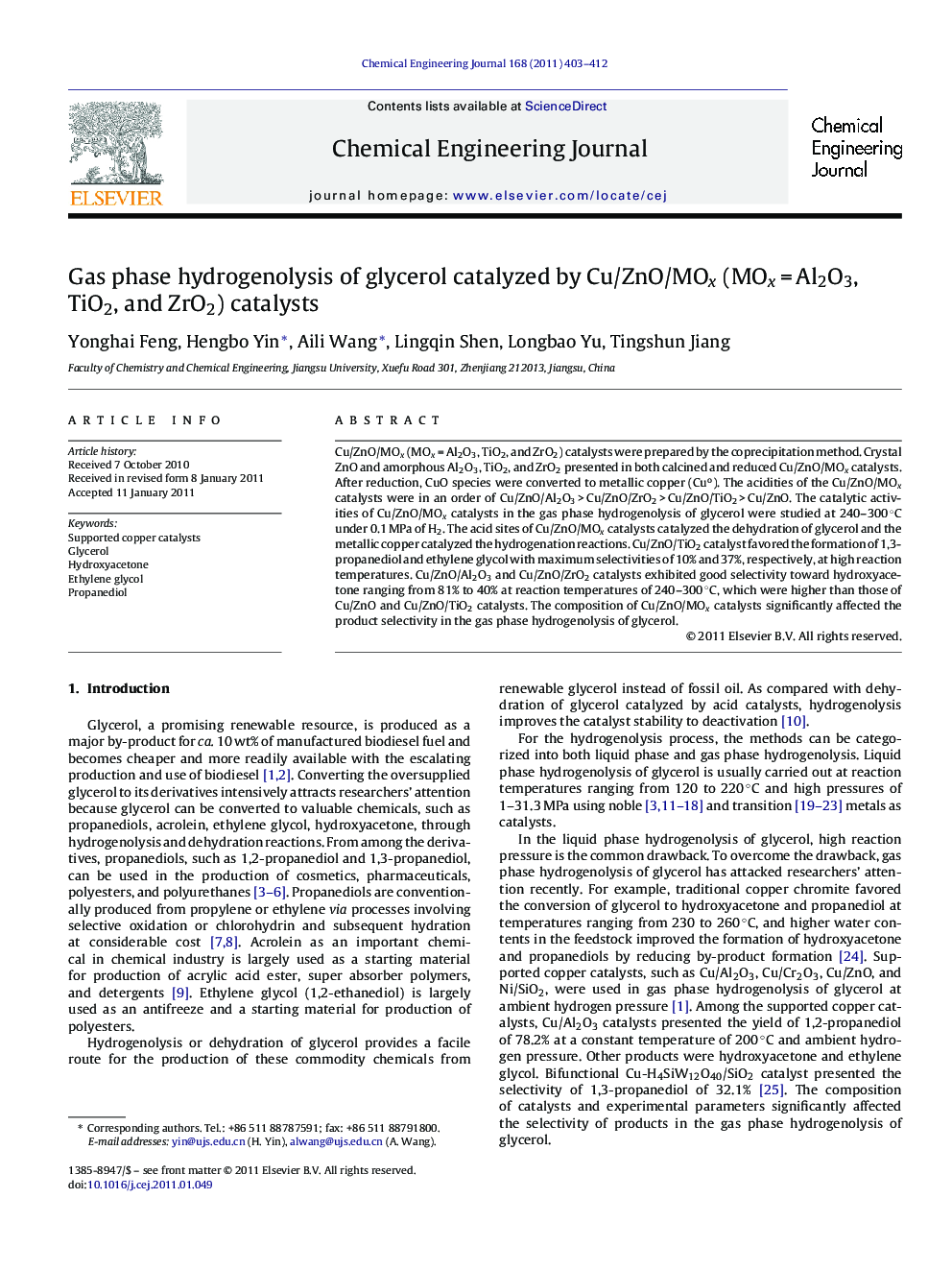| Article ID | Journal | Published Year | Pages | File Type |
|---|---|---|---|---|
| 151443 | Chemical Engineering Journal | 2011 | 10 Pages |
Cu/ZnO/MOx (MOx = Al2O3, TiO2, and ZrO2) catalysts were prepared by the coprecipitation method. Crystal ZnO and amorphous Al2O3, TiO2, and ZrO2 presented in both calcined and reduced Cu/ZnO/MOx catalysts. After reduction, CuO species were converted to metallic copper (Cuo). The acidities of the Cu/ZnO/MOx catalysts were in an order of Cu/ZnO/Al2O3 > Cu/ZnO/ZrO2 > Cu/ZnO/TiO2 > Cu/ZnO. The catalytic activities of Cu/ZnO/MOx catalysts in the gas phase hydrogenolysis of glycerol were studied at 240–300 °C under 0.1 MPa of H2. The acid sites of Cu/ZnO/MOx catalysts catalyzed the dehydration of glycerol and the metallic copper catalyzed the hydrogenation reactions. Cu/ZnO/TiO2 catalyst favored the formation of 1,3-propanediol and ethylene glycol with maximum selectivities of 10% and 37%, respectively, at high reaction temperatures. Cu/ZnO/Al2O3 and Cu/ZnO/ZrO2 catalysts exhibited good selectivity toward hydroxyacetone ranging from 81% to 40% at reaction temperatures of 240–300 °C, which were higher than those of Cu/ZnO and Cu/ZnO/TiO2 catalysts. The composition of Cu/ZnO/MOx catalysts significantly affected the product selectivity in the gas phase hydrogenolysis of glycerol.
